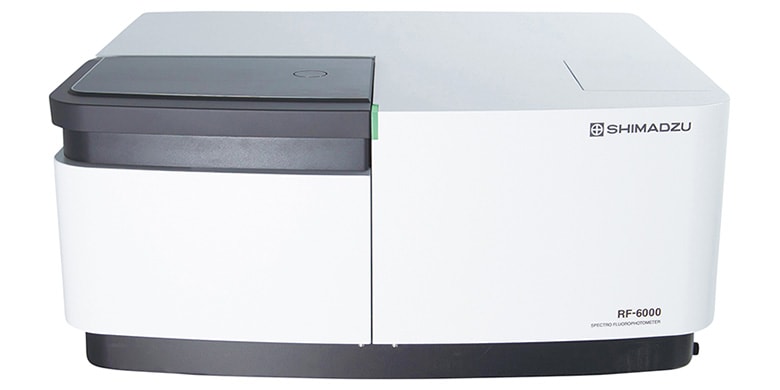
RF-6000
- The high-sensitivity detector of the RF-6000 enables measurement of weak upconversion. - Measurement corresponding to long wavelength excitation is possible by installing any appropriate optical filter.
Photon upconversion (UC) is a technique that makes it possible to convert long-wavelength near-infrared light to short-wavelength visible light. UC is expected to be used in medical applications such as photoimmunotherapy and drug delivery systems utilizing a method whereby near-infrared light, which has high biopermeability, is injected into the patient's body and is then functionalized by conversion to visible light. Research on applications in the energy sector is also underway, for example in photovoltaic cells, by conversion of the wide range of wavelengths in sunlight to useful wavelengths. In conventional photoluminescence by photon upconversion, it was necessary to irradiate molecules almost simultaneously with two photons, but for this reason, light with a high luminous flux density, such as laser light, was required in order to achieve an adequate emission intensity. However, in recent years UC materials with a long-lifetime excitation characteristic have been developed, and examples in which UC luminescence was confirmed even with luminous flux densities on the level of sunlight have also been reported. This article introduces an example of measurement of the light emission obtained by UC with a weak exciting light source using Shimadzu RF-6000 spectrofluorophotometer. The RF-6000 is expected to be an important tool for research and development/quality control of next-generation UC materials.
April 2, 2024 GMT
Some products may be updated to newer models